Did that title get your attention? If not, it should have, because production of the 2002tii ceased with the 1975 model year. After making over 38,000 tiis between 1971 and 1975, BMW offered no “Touring, International, Injection” models for the final year of 2002 production.
But if they did, what might it have looked like?
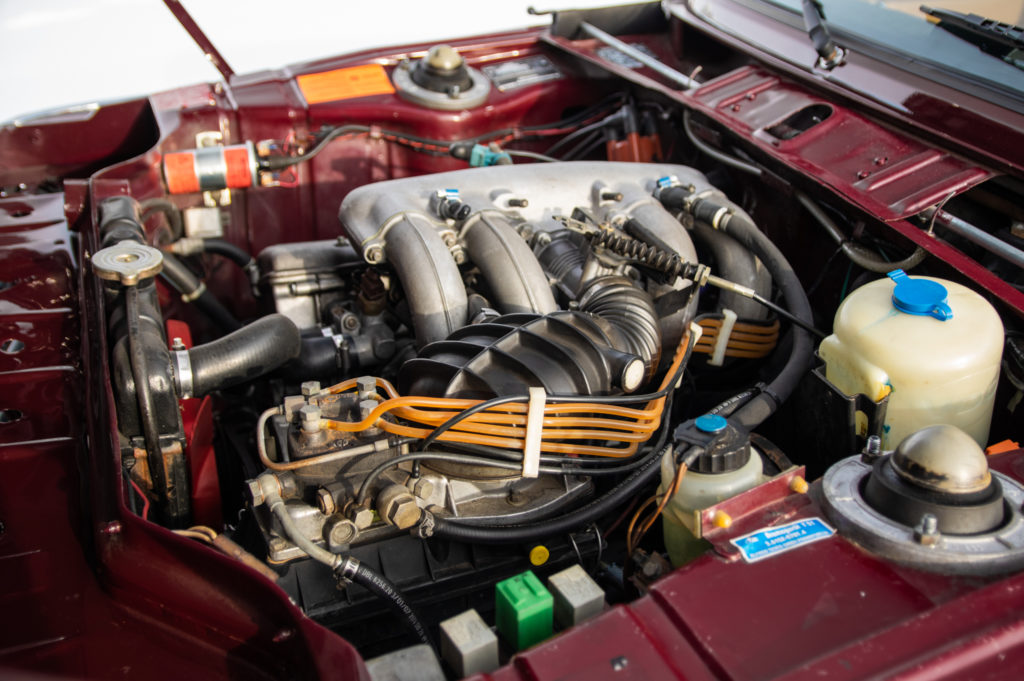
The E21 Bosch K-Jetronic fuel injection looks at home in a 2002.
The year 1976 was a pivotal one for BMW, with the outgoing 2002 being replaced by the first-generation 3 Series, the E21. In the U.S. market, the E21 320i was offered standard with the most distinguishing feature of the 2002tii: fuel injection. But instead of the tii’s Kugelfischer mechanical injection, the E21’s M10 engine featured a Bosch K-Jetronic continuous injection system.
The main advantage of the K-Jet system was simplification (those words could start a fight in the wrong pub). Fuel was fed via an electric pump to a pressurized distribution hub, and then through continuous port injection to each cylinder. The E21 was further distinguished by its larger bumpers and “modernized” design, but underneath the sheet metal, the E21 was closer to the 2002 than to the E30 3 Series that would follow it. As a result, many of its parts were interchangeable with the 2002.

This Malaga 1976 2002 may be the closest thing to what a 1976 2002tii could have been.
That brings us to this particular 2002, which, despite having a few other tasteful modifications, is what a 1976 2002tii might have looked like.
It all began back in the mid-2000s when an Air Force Academy graduate was shipped off for assignment. They had owned the 2002 through their cadetship, but it was in poor condition and in need of a new home. It was posted on Craigslist, and soon found its way to a local 2002 builder in Denver, Colorado. That builder just happened to have an E21 320iS parts car, and his brother—who would eventually become the car’s owner—was a master at hunting for new-old-stock parts. The two combined forces, and a plan was set in motion.

The distinct sound of a BMW M10 is always made better by a proper exhaust.

Relocating the battery to the trunk, within a strut brace, is a must for a hot-rod 2002.
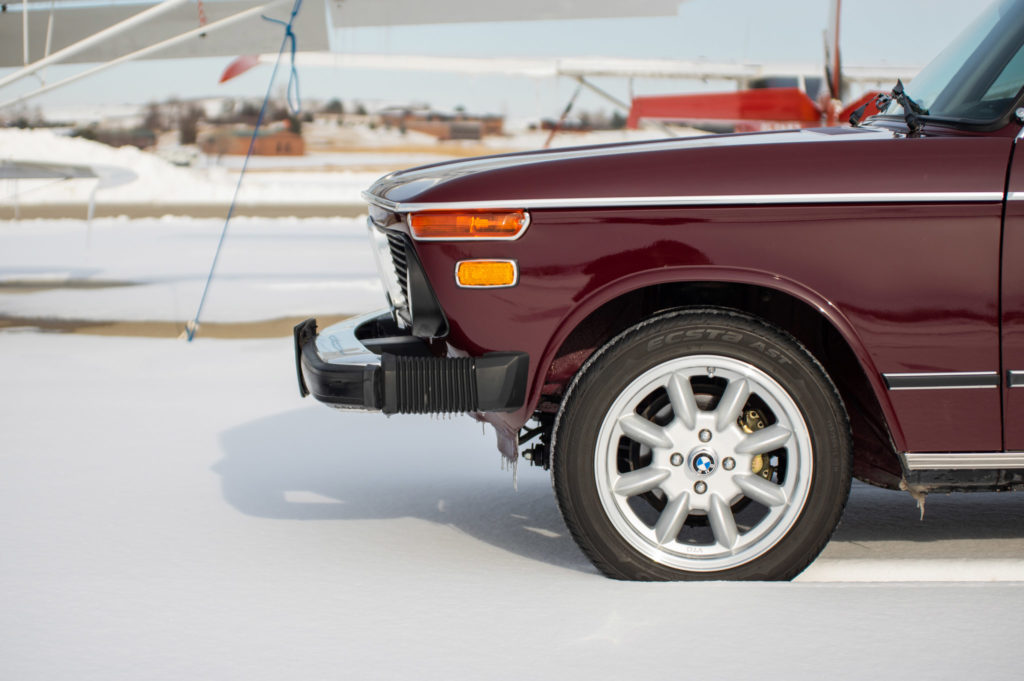
Although these are VTO Classic replicas, Minilight wheels always look correct on a 2002.
First the glass was removed and the body was stripped, repaired, and repainted in the original Malaga color. New-old-stock seals, grilles, trim, lights, and lenses were replaced in the process. After that the real magic began: An engine from a 1975 2002 was found and rebuilt, and the E21 K-Jet fuel system was retrofitted, along with a solid-state ignition. To make it sing, tii headers and an Ansa exhaust handle exhalation duties. The E21’s five-speed gearbox and 3:91 limited-slip differential complete the drivetrain. The suspension was refreshed and upgraded with Bilstein shocks and larger sway bars. The battery was relocated to the trunk and mounted in a strut brace for better rigidity and weight distribution. Finally, to complete the look and handle the added performance, fifteen-inch VTO Classic Minilite-style wheels were added. (I love Minilites on a 2002!)

A wood-rim Nardi steering wheel adds more European goodness to the interior.
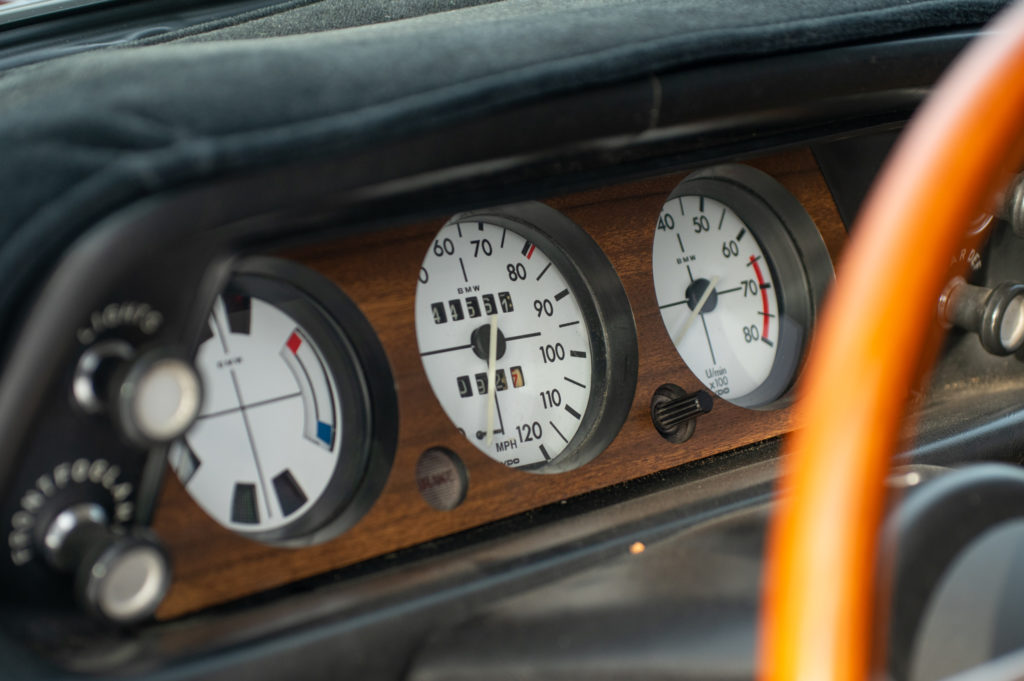
Behind the steering wheel, white gauges stand out from the traditional black instruments.
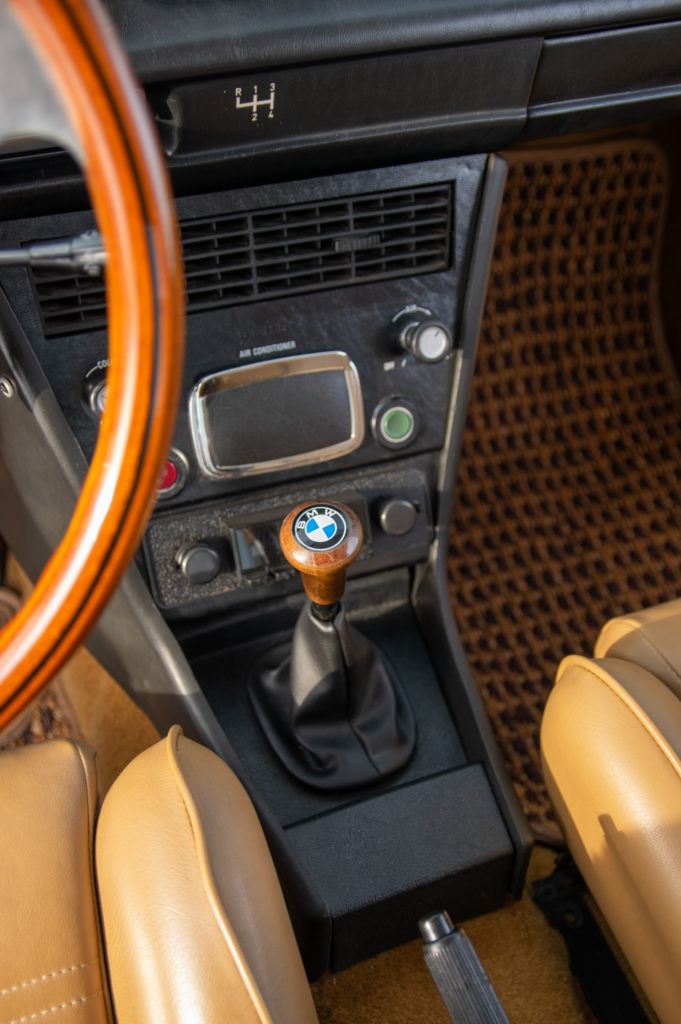
A retro-modern stereo and air conditioning are present, although neither is functional.
The interior was completely refinished with new rubber, carpet, trim, door cards, a crack-free dashboard, and a fresh headliner. An air-conditioned center console with a retro-modern stereo was installed, although the stereo was never hooked up, and the actual mechanical air-conditioning bits were left out. Scheel sport seats, an incarnation of the original E21 style, hold occupants in place, with the original rear seats being recovered to match. A wood-rim three-spoke Nardi steering wheel and wooden shift knob were added to accentuate the late-model wooden instrument binnacle. Behind that binnacle, white gauges were installed, and above them, a map-light mirror from an E30.
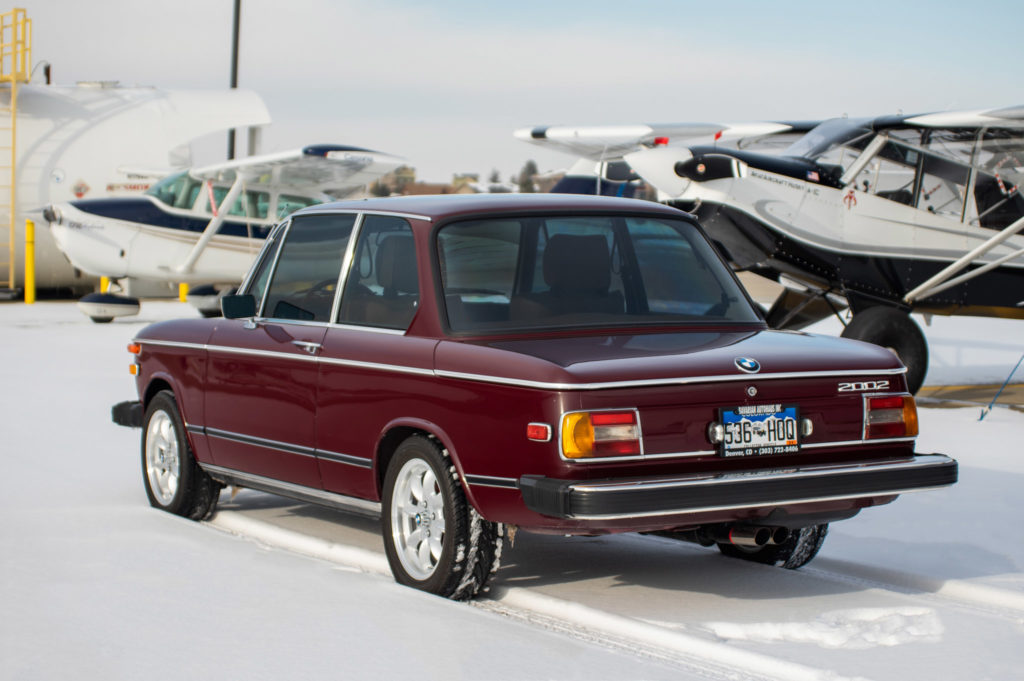
Malaga is to Saddle like jelly is to peanut butter in the waning winter light.

It took the better part of a decade, but by the early teens, the 2002 was done—and oh, man, it was fantastic! It made the rounds in the Colorado BMW scene, even winning a local concours or two.
Another decade on, the car has aged gracefully. Malaga is a defining color in the 2002 pallet, especially over a Saddle Brown interior. In the cool winter sunlight, the paint on this example looks like liquid raspberry jelly and is a reminder of how dull modern car colors are compared to those of the 1970s.
Although the general consensus is that early “roundie” 2002s have more charm, I love a nice square-taillight car. The late-model 2002s also had black grilles and black bumper inserts, which tie in with black lower trim strips. The dark colors make the chrome accents pop, harnessing the sunlight from the freshly fallen snow along with the light-colored Minilite replicas.
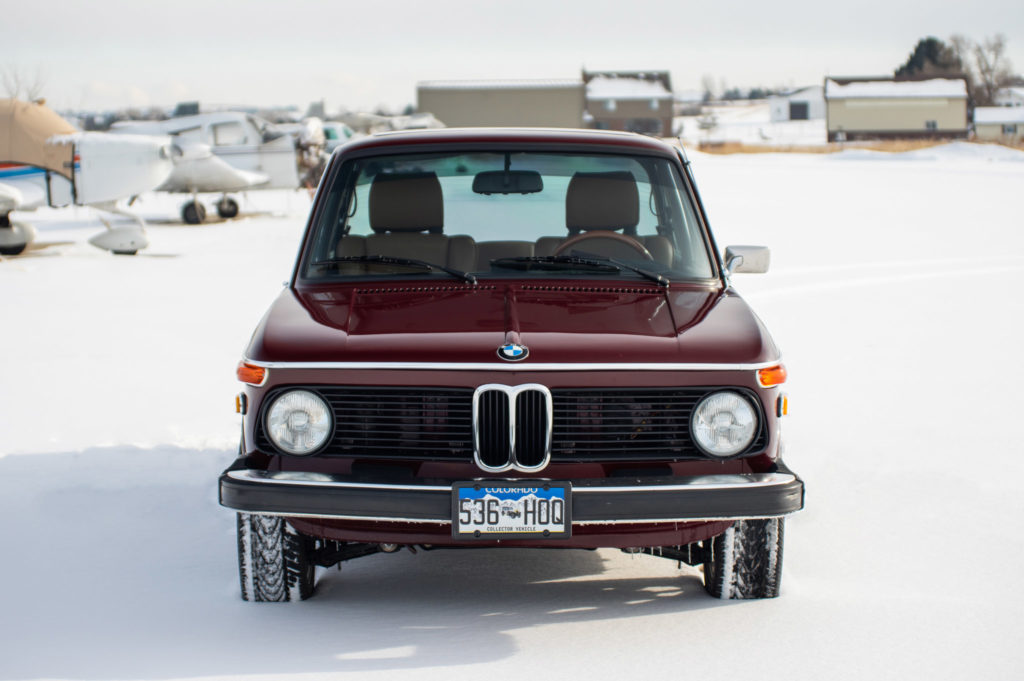
Late-model 2002s had black grilles, which modernized the look over black bumper trim.

The snow at the airport was fresh, but I didn’t dare expose the car to the slush and chemicals out on the open road.
Inside, the Saddle leather is warm and welcoming, while the wooden accents are delightfully European. Sit down, strap in, make sure the steering-wheel lock isn’t putting any pressure on the ignition, and turn the key—gently. The M10 fires right up, with none of the gas-pedal theatrics that a poorly rigged Kugelfischer system sometimes requires.
Start easy to let the oil warm up, but soon it’s business time. I couldn’t, in good conscience, expose the Malaga 2002 to the melting snow and mag chloride out on the open roads today, but I have plenty of seat time behind the wheel of this example in fair-weather conditions. There are few joys as wonderful as piloting a BMW 2002, and in turn, there are few 2002 drivers who won’t have a joyful smile on their face. In an example like this, that smile is turned up to eleven.
And that begs the answer to the initial question: Is this a homemade 1976 2002tii?
Before you tii-elitists start cracking your keyboard-laden knuckles for the mere heresy of my suggestion, the short answer is no. The 2002tii community is one of purity, and I fear that this one is too far from that mold. But don’t relax too much, because the real answer is that this 2002 is better for it.
By 1976, many cars had succumbed to ever-increasing emissions standards. In my fantastic alternate reality, this would have likely neutered the high-compression engine of the hypothetical 1976 2002tii, leveling the playing field with the standard 2002. But my fictional tii would still be fuel-injected, and with the E21 already in production, it could have come from the factory with the Bosch K-Jet injection, a five-speed gearbox, and a 3:91 limited-slip differential.
Unfortunately, it didn’t—but that didn’t stop this team of brothers from building it anyway!—Alex McCulloch.
[Photos courtesy Peter Thompson.]





















